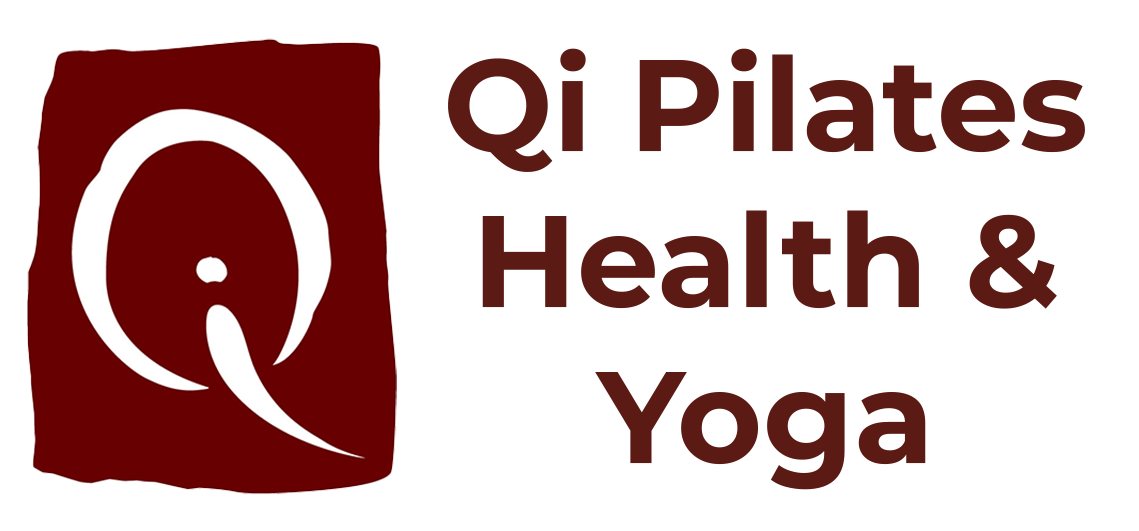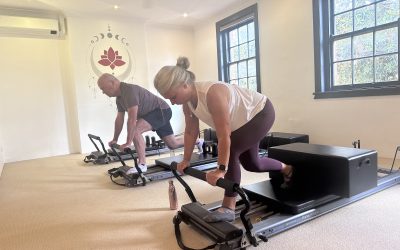Back pain as one of the modern world epidemics is a major public health issue of our society. It is estimated that 4 out of 5 people will suffer from low back pain at least once in their lifetime, putting a strain on our public health system.
Whether concerning public or personal cost management, a scientific study suggests that Pilates might be the low-cost and safe management of chronic non-specific low back pain (CNLBP).
Pilates appeared during World War I to rehabilitate those injured by the war. Recently, the method started to be used by health professionals with the objective of integrating body and mind, because it improves fitness, flexibility, strength, balance and body awareness (Latey P. The Pilates method: history and philosophy. J Bodyw Mov Ther. 2001;5(4):275-82.)
When we think about Pilates, we often think that strengthening the core muscles is about getting hard abs, while in fact rebuilding the core in Pilates involves the pelvic floor muscles, diaphragm and the back.
The foundation of Pilates is rooted in diaphragmatic breath work, and the root of diaphragmatic breath work facilitates strength in your inner core unit
By targeting your core, you take the strain off of your lower back muscles, discs, and joints.
Several research studies have suggested that Pilates is beneficial at preventing back pain but it can also be effective for relieving lower back pain. The benefits of doing Pilates include improved core strength, increased muscle strength and flexibility and improved posture. It’s also been found to be good for helping to manage pain.
The superiority of Pilates in exercises may be the result of activation of deep stabilising muscles and restoration of lumbopelvic rhythm (Mazloum et al, 2017)
In the study by (Kofotolis et al, 2016) It was found that Pilates exercise programme improved health-related quality of life and functionality.
Pilates is also recommended by doctors on a regular basis as an effective form of treatment for injury rehabilitation.
HSS, being the world’s leading academic medical centre focused on musculoskeletal health, recommends Pilates can relieve tension in this area.
5 basic exercises to help with back pain are:
Neutral spine (Constructive Rest) also known as Active Rest – is being used to release excess tension from the body, specifically from the psoas muscle. It’s also a great way to release stress from the body-mind. Involving sequences in this position will enhance the strength to the deep core stabilisers (powerhouse).
In dealing with back pain this is just the first step that should be followed up with active exercises that correct unhealthy movement patterns
Side to Side (windshield wiper rotations) – This exercise is great for learning to rotate (and so increase mobility) the lower back while maintaining the legs and trunk in alignment. Imagine that your thighs are like windscreen wipers moving to the left and right. Be careful not to arch your back but to allow the abdominals to power the movement.
Single leg stretch – It’s a wonderful way to restore flexibility in your low back muscles. when you’re starting from table top (knees bent 90 degrees over the hips) and stretching your single leg to 45 degrees and alternating while maintaining the Neutral in the spine during the movements keeping the head, neck and shoulders on the mat aligned. This movement will likely translate into a progression as you gain strength and more experience with the practice.
Chest lift (Ab curl) As much as simple this exercise seems it helps you to activate and strengthen the deep core muscles. This is one of the foundation exercises of Pilates, and it’s a great way to get used to the ‘mind-muscle connection’ but It is important to know how to accurately engage your core muscles.
Straight leg stretch (hamstring Stretch) – The hamstrings are very large muscles (at the back of your thighs) responsible for bending the knee and assisting the gluteal muscles to extend the hip. When the hamstrings are tight, it pulls the pelvis under, putting tension on the lower back, which can lead to compression between the vertebrae. Stretching the hamstrings can gradually lengthen them and reduce the stress felt in the lower back.
At Qi Pilates Health and Yoga we offer tailored Mat, Sculpt and Reformer Pilates classes, however A 2016 study concluded that Pilates equipment has an edge over mat exercises in regards to injury rehabilitation.
If you’re interested in learning more about Pilates at Qi Pilates Health and Yoga, please get in touch with us.



0 Comments